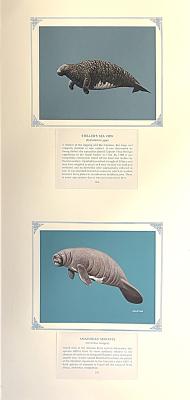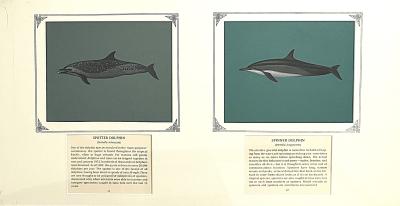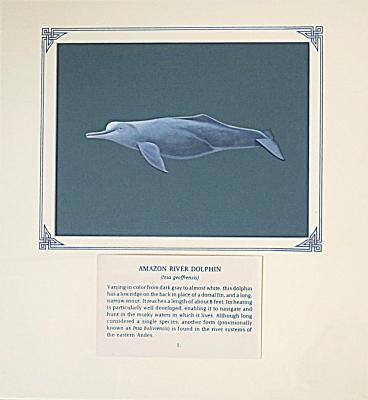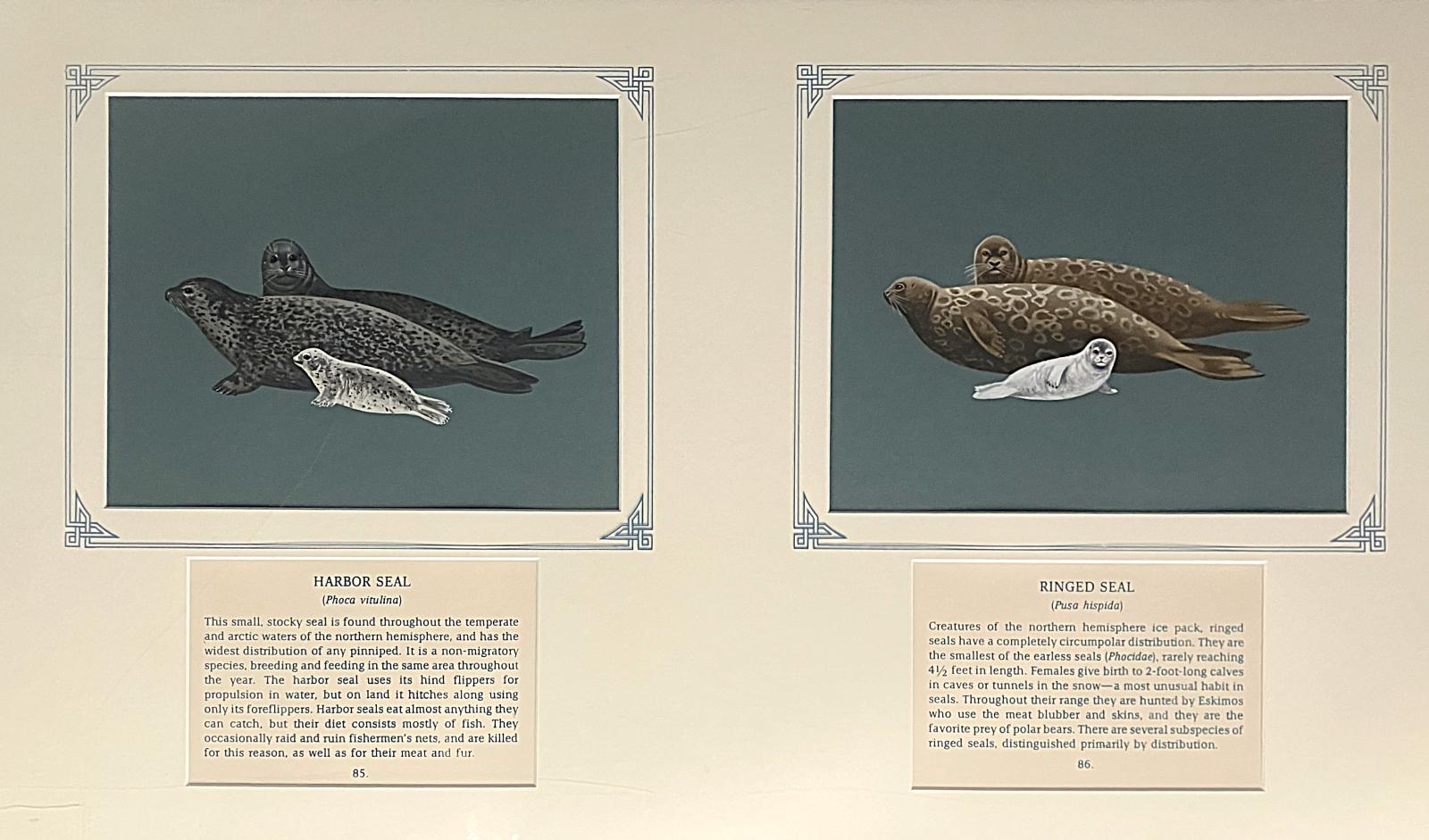PAINTING - (a) HARBOR SEAL, (b) RINGED SEAL
c. 19752 paintings in single framed work (a) Harbor seal: 2 black spotted grey seals, rounded bodies, a dog-like snouts, and short flippers, with mottled white pup. (85.) (b) Ringed seal: 2 plump-bodied brown seals with distinctive silver rings on their backs and sides, small, rounded heads and short snouts, with grey/white pup. (86.); gouache on blue card, framed and mounted with inscription
Marks: (on verso Smithsonian label checklist # 85,86,87 Packing case # 1) (Full details on Data Record Sheet) This has now been reframed (c) is now in a separate frame and is RE.1999. 447 . There is now nothing marked on verso.
Collection of 106 of paintings by Richard Ellis that were selected by the Smithsonian Institution to form a traveling exhibit of the marine mammals of the world. The collection was purchased by Perth businessman Kevin Parry in 1985 and donated to Whale World, now known as Albany's Historic Whaling Station.
Details
Details
(a) HARBOR SEAL (Phoca vitulina)
This small, stocky seal is found throughout the temperate and arctic waters of the northern hemisphere, and has the widest distribution of any pinniped. It is a non-migratory species, breeding and feeding in the same area throughout the year. The harbor seal uses its hind flippers for propulsion in water, but o land it hitches along using only its fore flippers. Harbor seals eat almost anything they can catch, but their diet consists mostly of fish. They occasionally raid and ruin fishermen's nets, and are killed for this reason, as well as for their meat and fur.
85.
(b) RINGED SEAL (Pusa hispida)
Creatures of the northern hemisphere ice pack, ringed seals have a completely circumpolar distribution. They are the smallest of the earless seals (Phocidae), rarely reaching 4½ feet in length. Females give birth to 2-foot-long calves in caves or tunnels in the snow - a most unusual habit in seals. Throughout their range they are hunted by Eskimos who use the meat blubber and skins, and they are the favorite prey of polar bears. There are several subspecies of ringed seals., distinguished primarily by distribution.
86.
The paintings represent a body of work by well-known American marine conservationist, author, artist and natural historian Richard Ellis (1938-2024).
Copyright and Reference
Copyright and Reference
Albany's Historic Whaling Station
Albany's Historic Whaling Station
Other items by Richard Ellis
- PAINTING - SOUTHERN LION SEAL
- PAINTING - HOURGLASS DOLPHIN
- PAINTING - CHINESE RIVER DOLPHIN
- PAINTINGS - (a) DUSKY DOLPHIN & (b) PEALE'S DOLPHIN
- PAINTING - (a) Steller's Sea Cow (b) Amazonian Manatee
- PAINTINGS - SPOTTER DOLPHIN (11) & SPINNER DOLPHIN (12)
- PAINTING - ROSS SEAL
- PAINTING - FRANCISCANA
- PAINTING - FALSE KILLER WHALE
- PRINT -HUMBACK WHALE AND SPINNER DOLPHINS- PUBLISHER PROOF 4/20
- PAINTING - RIBBON SEAL
- PAINTING - GREY SEAL
More items like this
Other items from Albany's Historic Whaling Station
- PAINTING - HARP SEAL
- PAINTING - AUSTRALIAN SEA LIONS
- PAINTING - WALRUS
- PAINTING - HOODED SEAL
- PAINTING - PACIFIC WHITE-SIDED DOLPHIN
- PAINTING - STRIPED DOLPHIN
- PAINTING - AMAZON RIVER DOLPHIN
- PAINTINGS - (a)FRASER'S DOLPHIN & (b)WHITE BEAKED DOLPHIN
- PAINTINGS - (a) HARBOR PORPOISE (b) VAQUITA
- PAINTINGS (a) NORTHERN RIGHT DOLPHIN (b)SOUTHERN RIGHT DOLPHIN
- PAINTING - (a) INDO-PACIFIC HUMPBACK DOLPHIN & (b) ROUGH-TOOTHED DOLPHIN
- PAINTING - DENSE-BEAKED WHALE




